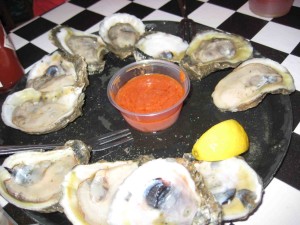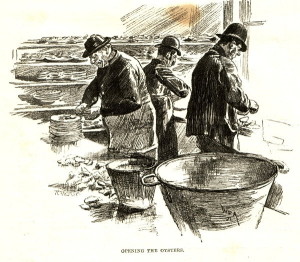I did an almost one-hour radio interview this morning, and I messed up: I had a brain cramp and couldn’t remember the species of Vibrio that can cause problems, especially in raw oysters.
 But then I saw this story and was reminded that the number of Vibrio vulnificus cases reported in Florida in 2015 to date is the highest seen in the state in years, according to Florida Department of Health data. The 2015 tally, which has reached 42, is higher than any year from 2008 to 2014 (data available on DOH website).
But then I saw this story and was reminded that the number of Vibrio vulnificus cases reported in Florida in 2015 to date is the highest seen in the state in years, according to Florida Department of Health data. The 2015 tally, which has reached 42, is higher than any year from 2008 to 2014 (data available on DOH website).
Prior to this year, the high was reported in 2013 with 41 cases. Vulnificus cases have been reported in 25 counties with Hillsborough (5), Duval (4), Bay (3) and Polk (3) counties seeing the most.
In addition, the Vibrio death toll in Florida has reached 13, the most since 2011. Deaths have been reported from the following counties: Brevard (2), Duval (2), Escambia (1), Hillsborough (3), Lake (1), Marion (1), Pinellas (1), Polk (1) and Sarasota (1).
Vibrio vulnificus can cause disease in those who eat contaminated seafood or have an open wound that is exposed to warm seawater containing the bacteria. Ingestion of Vibrio vulnificus can cause vomiting, diarrhea and abdominal pain. Vibrio vulnificus can also cause an infection of the skin when open wounds are exposed to warm seawater; these infections may lead to skin breakdown and ulcers.
Healthy individuals typically develop a mild disease; however, Vibrio vulnificus infections can be a serious concern for people who have weakened immune systems, particularly those with chronic liver disease.









